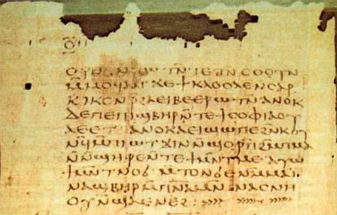 Dear readers, Catholic Online was de-platformed by Shopify for our pro-life beliefs. They shut down our Catholic Online, Catholic Online School, Prayer Candles, and Catholic Online Learning Resources essential faith tools serving over 1.4 million students and millions of families worldwide. Our founders, now in their 70's, just gave their entire life savings to protect this mission. But fewer than 2% of readers donate. If everyone gave just $5, the cost of a coffee, we could rebuild stronger and keep Catholic education free for all. Stand with us in faith. Thank you. Help Now >
Dear readers, Catholic Online was de-platformed by Shopify for our pro-life beliefs. They shut down our Catholic Online, Catholic Online School, Prayer Candles, and Catholic Online Learning Resources essential faith tools serving over 1.4 million students and millions of families worldwide. Our founders, now in their 70's, just gave their entire life savings to protect this mission. But fewer than 2% of readers donate. If everyone gave just $5, the cost of a coffee, we could rebuild stronger and keep Catholic education free for all. Stand with us in faith. Thank you. Help Now >
Scholars discover fragments of a banned gospel of Jesus
FREE Catholic Classes
Scholars have discovered fragments of a banned "gospel" of Christ in a collection of ancient manuscripts at Oxford University. The fragments are Greek copies of the heretical 'First Apocalypse of James,' and date to the fourth century.

Fragments of the Gospel written in Greek provide a new translation for scholars to evaluate.
Highlights
Catholic Online (https://www.catholic.org)
12/4/2017 (8 years ago)
Published in Europe
Keywords: First Apocalypse of James, gospel, Gnostic, heresy
LOS ANGELES, CA (California Network) - Scholars at Oxford have discovered fragments of the heretical 'First Apocalypse of James' in the Nag Hammadi collection of ancient manuscripts.
The fragments do not add anything to our knowledge of the fake gospel, which is largely intact, but missing some fragments. However, the pieces appear to date back to the fourth century and may have been copies made from the original text. What makes these fragments remarkable is they are the first ones scholars have found written in Greek.
In addition to being written in Greek, the words are broken up into syllables. The text is neatly written suggesting a scholar copied the text. The gospel was commonly copied by Egyptian students to help them learn Greek. Teachers often composed models for the students to follow. The fragments are probably from one such model.The gospel isn't a proper gospel, but rather a heretical work of fiction that was popular with the Gnostics. The Gnostic heresy was a belief that was popular for about two centuries. Followers believed that the material world was inherently evil. The heresy was condemned because it contradicts Biblical teaching that God is our creator, that all creation is good, and Jesus was a man as well as God.
In the gospel, Jesus speaks to James, whom he refers to as His 'brother,' although in the non-maternal sense (meaning they were close companions, and not related). Jesus tells James of what is to come in the future and not to worry. The book also suggests Jesus had seven female disciples.
The book is a work of fiction and was rejected by the Church. The Gnostic heresy died around the 4th century as the canon of the Bible was established and the Church taught clearly about Christ and the nature of God and creation.
Perfect Catholic Gifts-Catholic Online Shopping
---
'Help Give every Student and Teacher FREE resources for a world-class Moral Catholic Education'
Copyright 2021 - Distributed by Catholic Online
Join the Movement
When you sign up below, you don't just join an email list - you're joining an entire movement for Free world class Catholic education.
An Urgent Message from Sister Sara – Please Watch
- Advent / Christmas
- 7 Morning Prayers
- Mysteries of the Rosary
- Litany of the Bl. Virgin Mary
- Popular Saints
- Popular Prayers
- Female Saints
- Saint Feast Days by Month
- Stations of the Cross
- St. Francis of Assisi
- St. Michael the Archangel
- The Apostles' Creed
- Unfailing Prayer to St. Anthony
- Pray the Rosary
![]()
Copyright 2026 Catholic Online. All materials contained on this site, whether written, audible or visual are the exclusive property of Catholic Online and are protected under U.S. and International copyright laws, © Copyright 2026 Catholic Online. Any unauthorized use, without prior written consent of Catholic Online is strictly forbidden and prohibited.
Catholic Online is a Project of Your Catholic Voice Foundation, a Not-for-Profit Corporation. Your Catholic Voice Foundation has been granted a recognition of tax exemption under Section 501(c)(3) of the Internal Revenue Code. Federal Tax Identification Number: 81-0596847. Your gift is tax-deductible as allowed by law.







